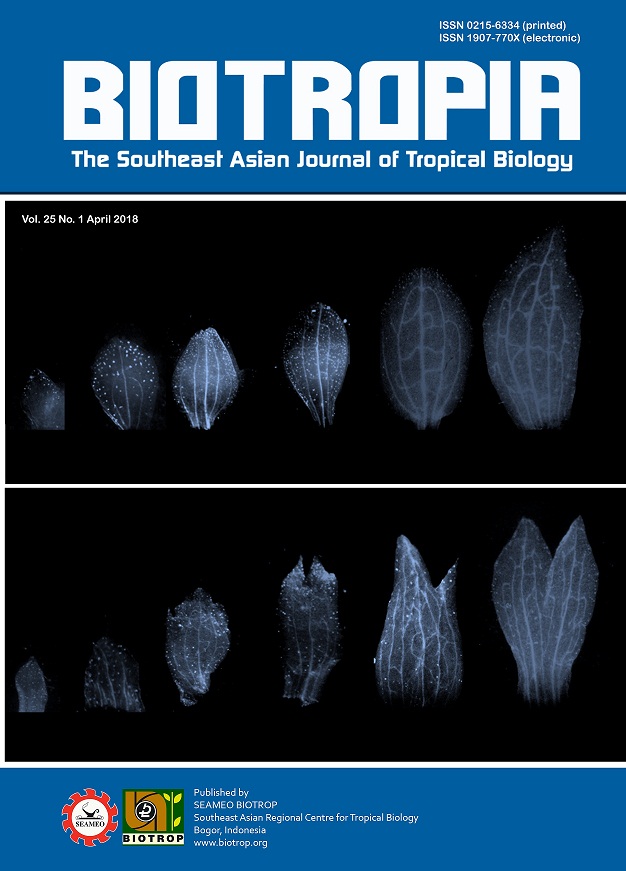
Tags
THE GROWTH STRATEGIES ANALYSIS OF TEN WOODY PLANT SPECIES FOR EFFECTIVE REVEGETATION
Content Language : English

The growth strategies of plant species show the ecological role which is reflexed by their adaptation to environments and competitiveness. Those are essential in the study of the revegetation effectiveness. However, the growth strategies of plant species in various types of habitats have not yet been fully investigated. The objective of this study was to investigate the growth strategies of ten woody plant species which were naturalized from mangrove to lowland habitats in relation to their effectiveness for revegetation program. The seedling’s growth was recorded during 4 months in Purwodadi Botanic Garden-LIPI from October 2014 to February 2015. Complete randomized design with plant species as a treatment using 3 replications was carried out to examine the plant’s Relative Growth Rates (RGRs), their components, leaf nitrogen productivity and growth strategies.The study showed that RGRs of ten woody plants species varied across species. Based on the Pearson correlations, the plant’s Net Assimilation Rates (NAR) and two ecological traits related to the root trait i.e. Nitrogen productivity and Specific Root Length (SRL) were strongly correlated with the RGRs. Heritiera littoralis, Diospyros discolor, Antidesma bunius, Schleichera oleosa, Madhuca longifolia and Syzygium cumini have high RGRs but low Specific Leaf Area (SLA). B. asiatica has relatively low RGRs and SLA, while Dracontomelon dao have high RGRs and SLA. It showed that most of plant species studied, except D. dao achieve growth rates and competitiveness by developing strategies through forming fine roots to maximize its ecological function in nutrients uptake. Most of woody plant species are adaptive to dry lowland habitat and only D. dao potentially occupy the ecosystem. Furthermore, D. discolor and S. oleosa are highly recommended for revegetation in degraded tropical lowland areas.
Link

This work is licensed under a Creative Commons Attribution-NonCommercial-NoDerivatives 4.0 International License.
